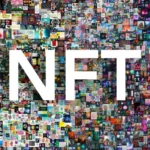Write Engaging Blockchain Blog Content starts with understanding your audience and delivering clear, valuable insights that cut through the technical noise.
In a rapidly evolving space like blockchain, blog content must not only inform but also capture attention and drive action.
Whether you’re educating beginners, guiding developers, or analyzing trends for investors, your content should simplify complex topics and build credibility.
This guide offers proven strategies to write blockchain blog posts that rank well, keep readers engaged, and position you as a trusted voice in the industry.
From topic selection to SEO best practices, you’ll learn how to create compelling, high-impact content that stands out in a crowded digital landscape.
Why Blockchain Blog Content Matters
Before diving into techniques, it’s crucial to understand why blogging about blockchain is so impactful.
The Importance of Blockchain Content
| Purpose | Impact |
|---|---|
| Educate New Audiences | Helps newcomers understand complex blockchain concepts |
| Build Authority | Establishes credibility within the blockchain and crypto space |
| Attract Organic Traffic | SEO-friendly content drives traffic to blockchain platforms |
| Generate Leads | Quality content can convert readers into clients or users |
| Increase Brand Visibility | Regular content keeps your project top-of-mind |
Now let’s explore how you can consistently create engaging blockchain blog content.
Step 1: Understand the Blockchain Audience
The blockchain ecosystem is diverse. Understanding your audience’s level of knowledge helps tailor the content appropriately.
Audience Segments in Blockchain
| Audience Type | Characteristics | Preferred Content Style |
|---|---|---|
| Beginners | Curious, new to blockchain, looking for simple explanations | Educational, glossary, FAQs |
| Developers | Technical, seeking code snippets, APIs, and use cases | Technical tutorials, documentation |
| Investors | Financially savvy, interested in trends and opportunities | Market analysis, tokenomics |
| Entrepreneurs | Business-minded, interested in blockchain solutions | Case studies, guides, strategy |
| Enthusiasts | Hobbyists, crypto Twitter users, Reddit followers | News, opinion pieces, reviews |
Tip: Create personas for your readers and write directly to them.
Step 2: Choose the Right Blog Topics

Great content starts with great ideas. Your blockchain blog topics should be relevant, timely, and aligned with what your audience is searching for.
Blog Topic Ideas for Blockchain
| Category | Example Blog Titles |
|---|---|
| Beginner Guides | “What is Blockchain? A Simple Explanation for Beginners” |
| Industry Use Cases | “How Blockchain is Revolutionizing Supply Chain Management” |
| Technical Tutorials | “How to Create a Smart Contract with Solidity: A Step-by-Step Guide” |
| Crypto and NFTs | “Top NFT Marketplaces to Watch in 2025” |
| Web3 Trends | “The Future of DAOs: Decentralized Governance in Action” |
| Investment Insights | “Top 5 Blockchain Projects with Real-World Impact” |
| Security and Regulation | “Is Blockchain Really Secure? Debunking the Myths” |
Use tools like Google Trends, AnswerThePublic, and SEMRush to find keyword-rich topics.
Step 3: Write Headlines That Get Clicks
A compelling headline is the first step to engaging content. It should be clear, benefit-driven, and optimized for SEO.
Tips for Writing Blockchain Headlines
- Use numbers: “7 Blockchain Use Cases You Haven’t Heard Of”
- Use power words: “Revealed,” “Ultimate,” “Essential”
- Be specific: “How Blockchain Can Reduce Cross-Border Transaction Fees by 80%”
- Include your keyword naturally
Formula: [Number] + [Adjective] + [Keyword] + [Promise]
Example: “5 Proven Ways Blockchain is Transforming Healthcare in 2025”
Step 4: Structure Your Blog for Readability
Blockchain is complex. Your writing shouldn’t be.
Formatting Best Practices
| Element | Tip |
|---|---|
| Headings (H2, H3) | Break up content logically, include keywords |
| Paragraph Length | Keep to 3–4 lines for easier reading |
| Bullets & Numbering | Great for steps, lists, and features |
| Images & Infographics | Use visuals to explain complex concepts like consensus algorithms |
| Code Blocks (if dev) | Format smart contracts or JSON properly for readability |
| Tables & Charts | Use to compare platforms, illustrate tokenomics, or explain stages |
Bonus: Add a “TL;DR” summary at the top for quick skimmers.
Step 5: Simplify Complex Concepts
Avoid jargon overload. Break down blockchain terms and use analogies that anyone can understand.
Simplifying Example
❌ Technical: “Ethereum uses a decentralized virtual machine to execute smart contracts across a distributed network.”
✅ Simple: “Think of Ethereum as a global computer that anyone can use to run programs, called smart contracts, without needing a central company.”
Include a glossary if your blog targets beginners.
Step 6: Incorporate SEO for Maximum Visibility

SEO helps your content rank on search engines. Blockchain-related keywords are competitive, so you’ll need a solid SEO foundation.
Blockchain SEO Checklist
| Element | Recommendation |
|---|---|
| Primary Keyword | Use in title, meta description, URL, first 100 words |
| LSI Keywords | Include related terms like DeFi, smart contracts, NFTs |
| Internal Linking | Link to other blog posts, glossaries, product pages |
| External Linking | Link to reputable sources like CoinDesk, Ethereum.org |
| Image Alt Text | Add keyword-rich descriptions to images |
| Meta Description | 150-160 characters with CTA and keyword |
Example Meta Description:
“Learn how to write engaging blockchain blog content that drives traffic, educates readers, and builds authority. A must-read for Web3 content creators.”
ALSO READ: How to Understand What NFTs Really Are?
Step 7: Add Real-World Examples and Case Studies
Case studies make abstract concepts tangible and demonstrate real-world blockchain adoption.
Real-World Blockchain Examples
- Supply Chain: IBM’s Food Trust uses blockchain to track produce from farm to store
- Healthcare: Medicalchain secures patient records on a blockchain ledger
- Finance: Compound allows users to lend/borrow crypto without a bank
Tip: Include charts and data to validate claims.
Step 8: Keep It Updated and Evergreen
The blockchain space evolves rapidly. A blog post from 2022 may already be outdated in 2025.
How to Keep Blockchain Content Fresh
| Strategy | Benefit |
|---|---|
| Regular Content Audits | Update outdated terms, protocols, links |
| Add New Use Cases | Reflect evolving industry applications |
| Repurpose Old Content | Turn into videos, infographics, ebooks |
| Watch Emerging Trends | DAOs, AI-Blockchain, Layer 2 solutions |
Make your content evergreen by covering foundational principles with updateable sections.
Step 9: Include Strong CTAs (Calls to Action)
Every blog should lead the reader to the next step.
CTA Examples for Blockchain Content
| Content Type | CTA Example |
|---|---|
| Developer Guide | “Try our blockchain API for free today” |
| Beginner’s Guide | “Subscribe to our newsletter for weekly tips” |
| Investment Article | “Download our free crypto investment checklist” |
| Case Study | “See how our blockchain solution can help you” |
Use CTAs above the fold, in-text, and at the end of your posts.
Step 10: Promote Your Blockchain Blog
Writing great content is just the start — you need eyes on it.
Promotion Channels
| Channel | How to Use |
|---|---|
| Twitter (X) | Share snippets, quotes, and tag relevant hashtags |
| Target B2B blockchain professionals | |
| Engage with communities like r/CryptoCurrency | |
| Medium | Cross-post and drive traffic to your site |
| Newsletters | Share new blogs with your email subscribers |
| Discord / Telegram | Share with your project or community channels |
Bonus: Tools to Enhance Blockchain Blog Writing

| Tool | Purpose |
|---|---|
| Grammarly | Grammar and tone check |
| Hemingway Editor | Improve readability |
| SurferSEO | On-page SEO optimization |
| Canva | Design infographics and visuals |
| Ahrefs / SEMrush | Keyword research and content planning |
| ChatGPT / Jasper | Idea generation and outline creation |
Common Mistakes to Avoid in Blockchain Content
| Mistake | Why It Hurts |
|---|---|
| Overusing Jargon | Alienates non-technical readers |
| Ignoring SEO | Limits discoverability |
| Writing Without a Goal | Confuses the reader, reduces conversions |
| Forgetting Visuals | Makes complex ideas harder to grasp |
| Lack of Credibility | Not citing sources or data undermines trust |
ALSO READ: How to Get Started with Crypto Coins: A Beginner’s Guide to Digital Currency
Conclusion
Writing engaging blockchain blog content is a blend of clarity, strategy, storytelling, and technical accuracy.
By understanding your audience, picking the right topics, and optimizing for SEO, you can consistently deliver valuable content that educates readers, builds authority, and boosts traffic.
As blockchain technology becomes more mainstream, there’s never been a better time to position yourself as a thought leader.
Whether you’re explaining how smart contracts work or analyzing the latest DeFi trends, your content can shape how people understand and engage with Web3.







